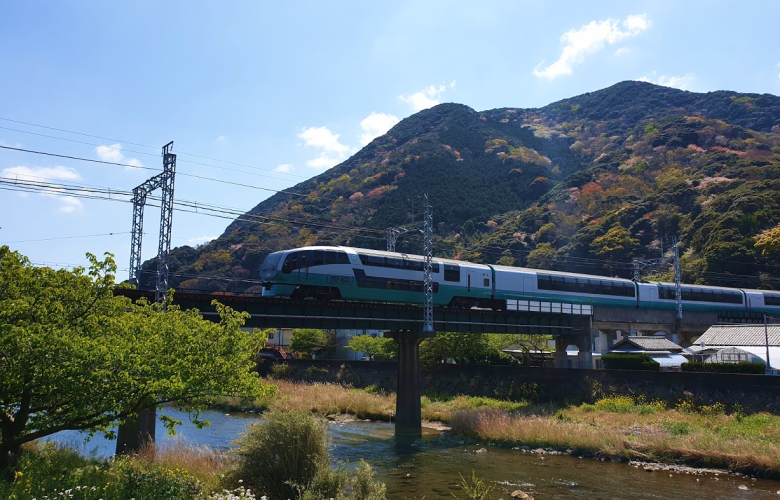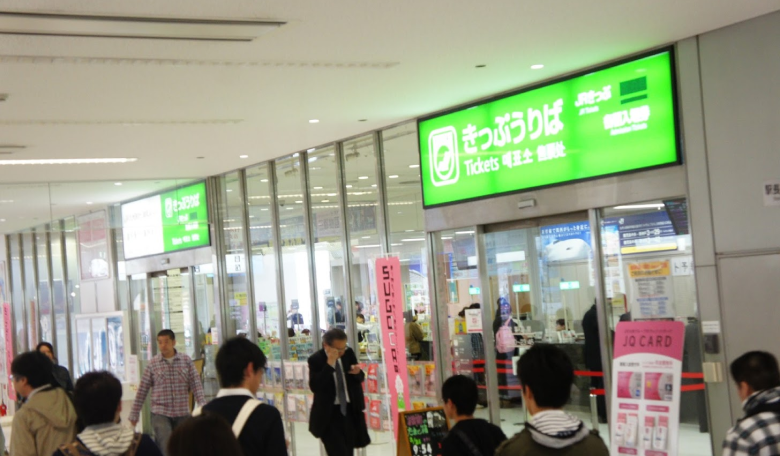Types of Train Passes in Japan
Train travel is a great way to see and explore Japan, and there are many different types of tickets and passes available to suit the different needs of travellers. From normal train tickets to rail passes and prepaid travel cards, understanding the benefits and differences of each option can be confusing or daunting. Below is a comprehensive rundown of the various types of passes and tickets available for foreign visitors in Japan on both JR trains and other train networks.
Train Tickets
If you’ve ever taken a train or metro before, then you’re likely familiar with how train tickets work in Japan, but it’s still worth going over. These ordinary train tickets are the kind you purchase inside a train station that take you from where you are to your destination. Of course, then there are return tickets to get you back to your start point, saving you from getting another ticket to come back.
The cost of these normal train tickets is based on many factors, but the main one is your destination. From that initial fare, prices vary depending on whether you’re an adult or child, while there are also discounts for students and large groups.
Each railway company has their own rules and fares for tickets, but this is how JR tickets are structured. They start with a base fare and then have various supplements added depending on how you want to travel:
- A Limited Express fee is applied for travel on the Shinkansen and limited express trains.
- A Seat Reservation fee is applied if you want to reserve a seat, ensuring you’re guaranteed a seat and getting to choose which one.
- A Green Car fee is applied for upgrading to travel in the green car, which is the first class cabin on JR trains.
- Night Train Berth fee is applied for upgrading to a berth or private compartment when travelling on a night train.
These tickets are valid for the one journey from A to B, normally just for a specific calendar day. However, journeys longer than 100 kilometres may extend how long your ticket is valid for and even allow you to stop-over part-way through your journey.
Japan Rail Passes
What is a Japan Rail Pass?
The Japan Rail Pass (JR Pass) is the most well-known type of pass for train travel in Japan, allowing foreign travellers to save money on frequent and/or long distance train trips during their visit. This rail pass allows passengers unlimited travel on nearly the entire national network of JR trains, including travel by shinkansen bullet train.
What is included in the Japan Rail Pass?
Passes cover durations of 7, 14 or 21 consecutive days, giving you the freedom to travel as much you want and need during that period. And since the JR Pass is designed only for foreign visitors to Japan, it’s intended as a cost-effective option for travelling around Japan by train. Included in the pass is nearly every shinkansen service, limited express trains, local trains, some JR buses and even the Hiroshima-Miyajima ferry.
However, it’s also important you know what isn’t included with the JR Pass. The most significant exclusion besides private railways are the Nozomi and Mizuho shinkansen services, although there are other shinkansen services on their routes that are covered under the JR Pass. Another case is when JR trains operate across sections of track owned by other railways companies, which will require passengers pay a supplemental fare for that part of the journey.
How to Use the Japan Rail Pass?
Upon purchasing your Japan Rail Pass, a paper Exchange Order will be sent out to the international address you provide. You must bring the physical Exchange Order with you to Japan and when you arrive you must visit a Japan Rail Pass Exchange Office. There you can exchange it for the actual JR Pass. You’re now able to travel with your pass and simply need to display it at the train station ticket gate.
Japan Rail Pass holders are also entitled to free seat reservations for JR trains. To make a seat reservation, visit a Midori no Mado Guchi ticket office at a train station. More information on seat reservations can be found here.
One thing to note is that with the passenger’s name displayed on the pass, only the pass holder may use the JR Pass. Railway staff may ask to see the passport of the pass holder to confirm their identity, so ensure you always have your passport with you.
Where to Buy a JR Pass?
If you’d like to purchase a Japan Rail Pass, the easiest and best way to buy one is online right here.
Green Passes
Those interested in getting a JR Pass but looking to travel in more comfort should instead consider a Japan Rail Green Pass. This pass is identical to the JR Pass in most ways, offering foreign tourists unlimited rides on JR trains. The difference though is that a Green Pass entitles the pass holder to unlimited travel in the Green cars of First Class. With the JR Green Pass travellers can enjoy increased space for leg room and peaceful comfort, as well as an easier time making seat reservations.
Regional Passes
Not every vacation to Japan is going to take the traveller right across the country. Quite often, foreign visitors will only focus on seeing a certain region or area of the country. In those situations, it may not make sense to buy a regular JR Pass that covers all of Japan. It may be wiser instead for travellers to investigate getting a regional pass that better aligns with their itinerary.
Generally speaking, there are three types of regional passes. The first type is valid for a single area, such as the Hokkaido Rail Pass for Hokkaido. With the next type of pass, an Area Pass, things get even more focused and the pass is only valid for a certain part of a region, like the Kansai Area Pass. Finally, there are a few regional passes that connect neighbouring areas which are the only passes besides the JR Pass to allow travel between multiple regions. With a pass like this, such as the JR East – South Hokkaido Rail Pass, it’s possible to travel from Tokyo to Sapporo.
Regional passes cost considerably less than a regular Japan Rail Pass as they cover a certain part of Japan rather than the whole thing. The process for ordering a regional pass is much like it is for a JR Pass. The main difference is that you’ll need to visit an Exchange Office at one of the stations within its region. There are actually over 30 different regional passes available, meaning it’s important you do your research to work out which may be right for you.
To find the right regional pass for you, consult our Expert Guide to Regional Passes.
IC Cards
Another option for paying train travel in Japan is with a thing called an IC card. They are prepaid travel cards that can be used to pay for travel on trains, as well as other forms of public transport like metro and subway lines, and city bus networks. Simply load money onto the rechargeable card and it automatically deducts the fare for your trip from the available balance.
The main benefit of using IC cards for train travel is the convenience of just walking straight to the ticket gates at the station and swiping your card. That way, you don’t have to allow time before hand to work out the ticket fare and purchase a new ticket. Being able to use the card for all sorts of other purchases like vending machines and convenience stores is just an added perk of the cards.
Compared to rail passes, there is one big draw back to IC cards. Whereas rail passes like the JR Pass are meant for long-distance trips, IC cards only work inside and not between IC card areas. This means you can use them for train travel around Tokyo, but not to take the train to Hokkaido. Another point worth understanding is that IC cards offer no discount on train fares, costing exactly the same as a normal ticket does.
Across Japan there are many different IC cards, with Suica, Pasmo and Icoca three of the most common ones. While each IC card belongs to a different company and region, they are mostly interchangeable, allowing you to use the Tokyo IC card when in Osaka and vice versa.
Other Types of Rail Passes
While JR trains make up much of the national network of trains in Japan, there are also many private railways that operate in Japan. These private railways offer a wide range of train services, from regional and intercity trains, to airport shuttles and special tourist trains. Much like for JR trains, you can purchase ordinary tickets to travel on these services, but some also offer their own special passes that may prove to be a good investment for you trip.
These other types of rail passes usually focus on physical or cultural regions with non-JR trains. Some passes worth being aware of include:
- Kansai Thru Pass: This 2-3 day pass allows travel on the subways, private railways and buses of the Kansai area including the Keihan Main Line, the Kansai Airport Line and the Kobe Subway.
- Nikko Pass: There are two versions of this pass that provide discounted travel between Tokyo and Nikko, with the difference the number of included buses in the area of Nikko.
- Koyasan World Heritage Ticket: This is a pass from Nankai Railways for a round trip from Namba in Osaka to Mt Koya, including the cable car and buses on Mt Koya.
- Kintetsu Rail Pass: A 1,2 or 5 day pass for travel on the Kintetsu railway line between Osaka, Kyoto and Nara, with Nagoya and Mie included in the 5 day option.
- Hakone Freepass: A 2-3 day pass from Odakyu Electric Railway for travel across 8 different transportation systems in the Hakone hot spring region.
These tickets are valid for the one journey from A to B, normally just for a specific calendar day. However, journeys longer than 100 kilometres may extend how long your ticket is valid for and even allow you to stop-over part-way through your journey.

